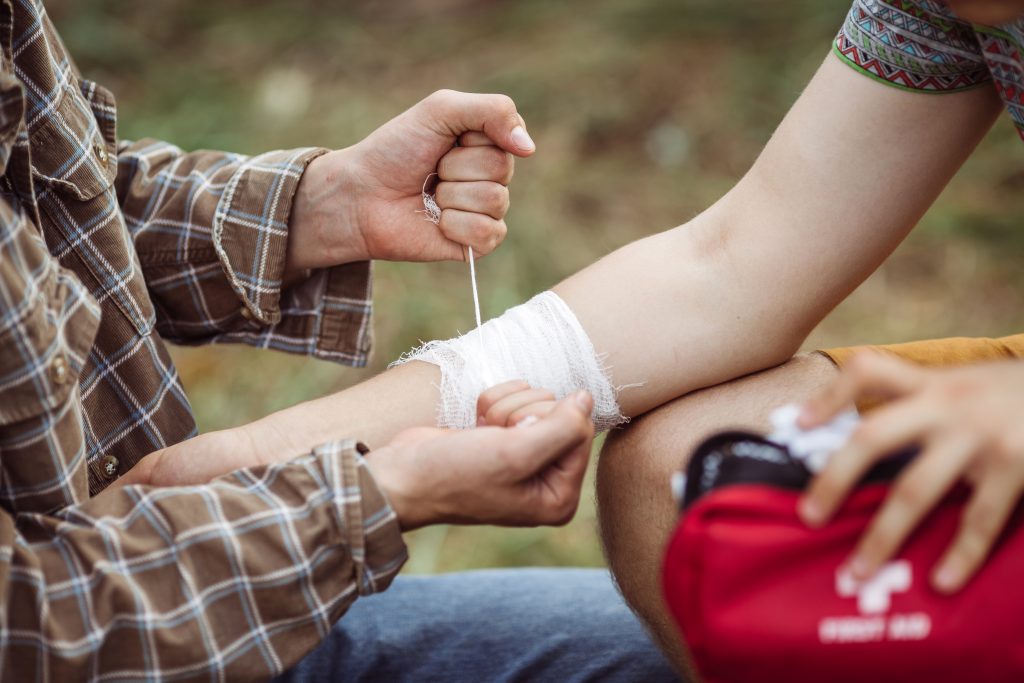No matter your age, education, or status in life, emergencies are inevitable. There will always be a time in our lives when we need to be prepared. Although developing a preparedness plan can be daunting for many, it can actually be very simple and manageable. One of the simple yet practical ways we can always stay prepared is by creating or buying a First-Aid kit.
What Is a First-Aid Kit?
A First-Aid kit is a way to package various items that can help in case of an emergency. These kits can range large and small depending on the individual or family circumstances and situation.
What Kind of First-Aid Items Are Essential?
The Red Cross has developed vital resources that can be provided in a First-Aid kit for a family of four. Although these are the essentials for the average family, it is important to remember to include emergency phone numbers and medications tailored to the individual or family. For example, if you have a child who struggles with a mental illness and takes medication to cope with it, store some of the medication in the First-Aid kit. This is a perfect way to be prepared for your child’s particular needs regardless of the situation. This same principle can apply to family members dealing with food allergies or diabetes. Take the time to include those specific medications for family members to ensure their health and safety in an emergency. The following essentials can be customized depending on the family size and circumstance:
- 2 absorbent compress dressings (5 x 9 inches)
- 25 adhesive bandages (assorted sizes)
- 1 adhesive cloth tape (10 yards x 1 inch)
- 5 antibiotic ointment packets (approximately 1 gram)
- 5 antiseptic wipe packets
- 2 packets of aspirin (81 mg each)
- 1 blanket (space blanket)
- 1 breathing barrier (with one-way valve)
- 1 instant cold compress
- 2 pair of nonlatex gloves (size: large)
- 2 hydrocortisone ointment packets (approximately 1 gram each)
- Scissors
- 1 roller bandage (3 inches wide)
- 1 roller bandage (4 inches wide)
- 5 sterile gauze pads (3 x 3 inches)
- 5 sterile gauze pads (4 x 4 inches)
- Oral thermometer (non-mercury/nonglass)
- 2 triangular bandages
- Tweezers
- First-Aid instruction booklet
Where Should You Have These Injury Care Packages?
These care packages should be kept in an accessible area for any emergency. Such locations can include your home, work environment, and your car. It is even advisable to carry a small First-Aid kit on your person at all times. These kits are especially crucial when embarking on outdoor activities such as hiking, skiing, cliff jumping, etc. Placing First-Aid kits in these areas can help you to always be prepared for any emergency that may come your way.
How Often Should I Update My First-Aid Kit?
It is recommended to update your kit routinely, approximately every few months. However, depending on the various emergencies that occur within those months, one should always update their kit to make sure they are prepared for the next emergency. Always make sure to revise emergency phone numbers and to check expiration dates on items such as medication in order to keep your First-Aid kit up to date and safe for any emergency. Be sure to replace medication and items that have passed their expiration date.
The information provided is for general interest only and should not be misconstrued as a diagnosis, prognosis or treatment recommendation. This information does not in any way constitute the practice of medicine, or any other health care profession. Readers are directed to consult their health care provider regarding their specific health situation. Marque Medical is not liable for any action taken by a reader based upon this information.


